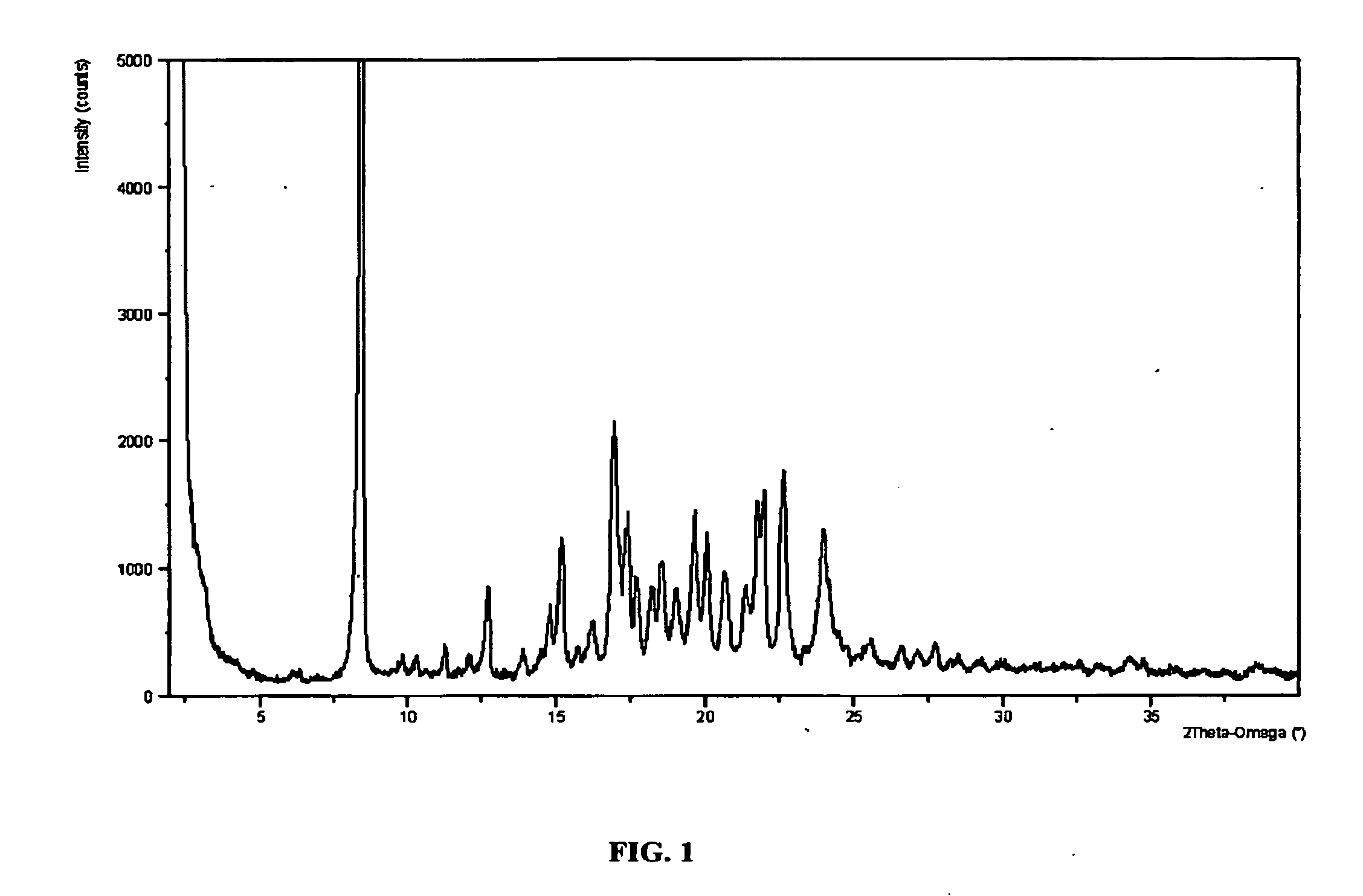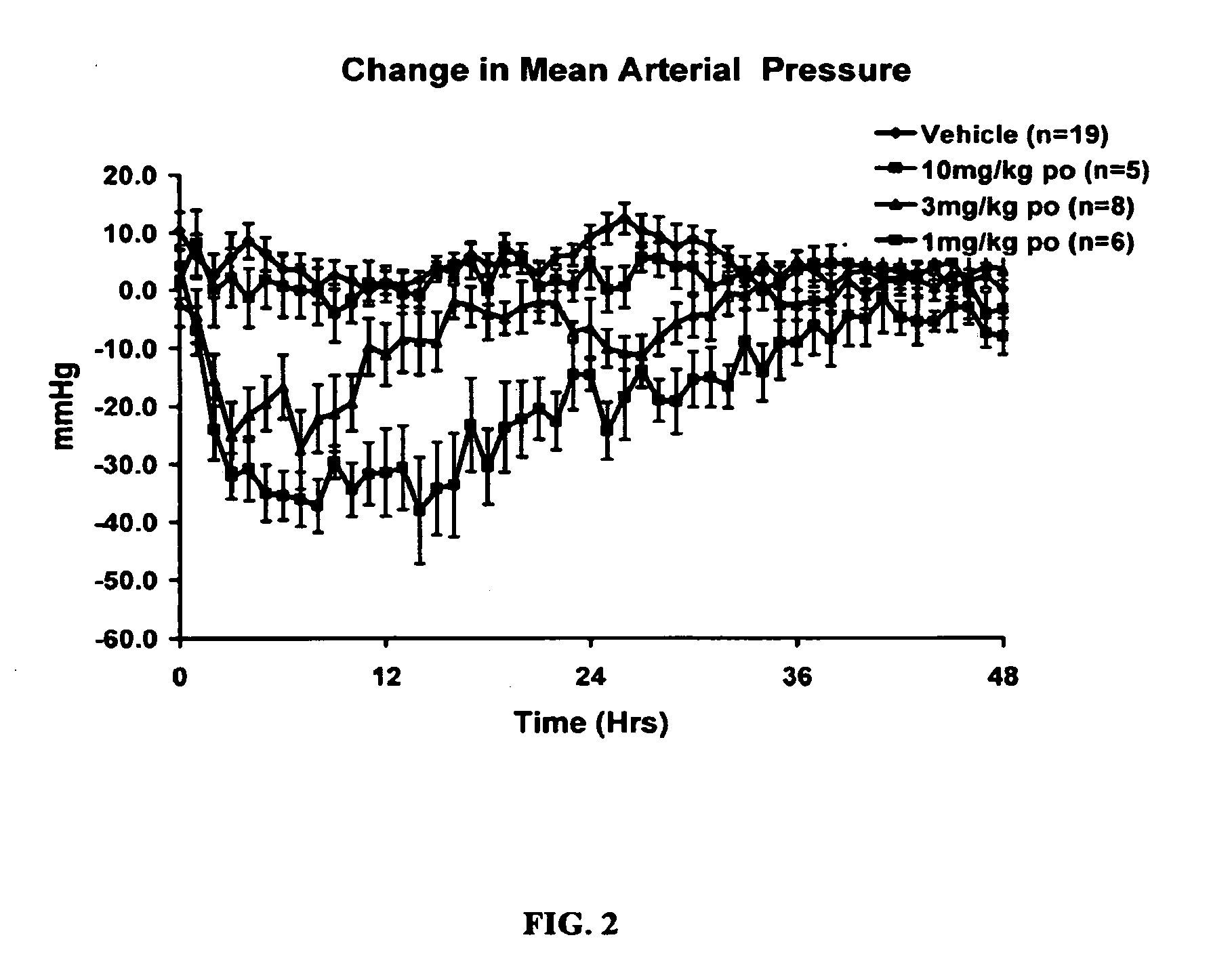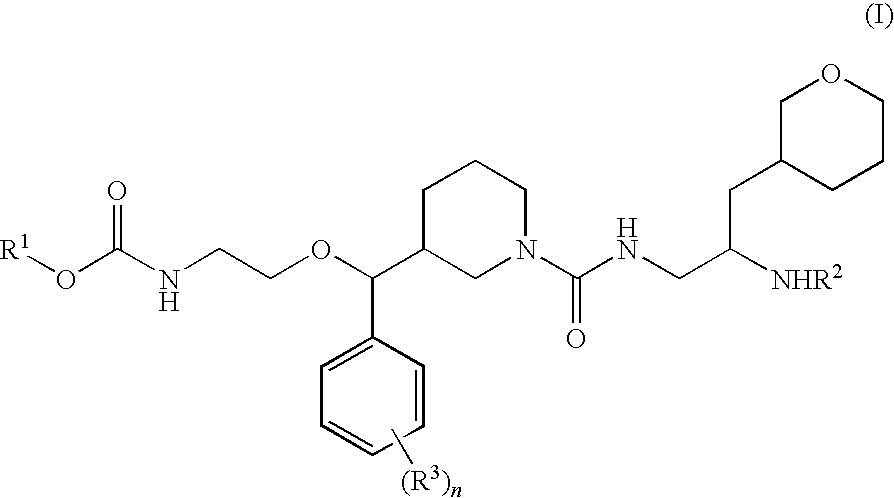Renin Inhibitors
a renin inhibitor and renin technology, applied in the field of renin inhibitors, can solve the problems of insufficient soluble renin inhibitors that can be prepared on a large scale, high cost of goods, and the inability to develop several compounds, etc., and achieves low molecular weight, high in vitro activity, and high cost of goods.
- Summary
- Abstract
- Description
- Claims
- Application Information
AI Technical Summary
Benefits of technology
Problems solved by technology
Method used
Image
Examples
example 1
General Synthetic Schemes
[0110]The compounds of present invention can be synthesized by coupling a pyran intermediate represented by the following structure:
with a piperidine intermediate represented by the following structure:
described in the following scheme:
Preparation of the Pyran Intermediate from Glutamic Ester
[0111]The pyran intermediate can be prepared from glutamic ester using the following synthetic scheme:
Preparation of the Pyran Intermediate from Pyroglutamic Ester
[0112]The pyran intermediate can also be prepared from pyroglutamic ester using the following synthetic scheme:
Preparation of the Piperidine Intermediate
[0113]The piperidine intermediate can be prepared by using the following synthetic scheme.
[0114]Alternatively, the piperidine intermediate can be prepared using the following synthetic scheme:
[0115]Specific conditions for synthesizing the disclosed aspartic protease inhibitors according to the above schemes are provided in Examples 2-11.
example 2
(R)-tert-butyl 3-((R)-(3-chlorophenyl)(2-(methoxycarbonylamino)ethoxy)methyl)piperidine-1-carboxylate
[0116]
Step 1. (R)-1-tert-butyl 3-ethyl piperidine-1,3-dicarboxylate
[0117]To a 20 L of round bottom flask was placed (R)-ethyl piperidine-3-carboxylate tartaric acid salt (2.6 kg, 8.47 mol, 1 eq) and CH2Cl2 (14 L). To the above solution, at 0° C. was added TEA (2.137 kg, 21.17 mol, 2.5 eq), followed by drop wise addition of (Boc)2O (2.132 kg, 9.74 mol, 1.15 eq). The mixture was allowed to stir overnight at room temperature. The mixture was washed with saturated citric acid solution (3×2.5 L), saturated NaHCO3 solution (3×2.5 L) and brine (2×2 L). The organic phase was dried over Na2SO4, filtered and the filtrate was evaporated to give colorless oil (2.2 kg, yield 100%).
Step 2. (R)-1-(tert-butoxycarbonyl)piperidine-3-carboxylic acid
[0118]To a solution of (R)-1-tert-butyl 3-ethyl piperidine-1,3-dicarboxylate (2.2 kg, 8.469 mol, 1 eq) in 5 L of MeOH was added a solution of LiOH (629.6 g,...
example 3
(R)-tert-butyl 3-((R)-(5-fluoro-2-methylphenyl)(2-(methoxycarbonylamino)ethoxy)methyl)piperidine-1-carboxylate
[0143]
Step 1. (R)-tert-butyl 3-(5-fluoro-2-methylbenzoyl)piperidine-1-carboxylate
[0144]To a solution of 2-bromo-4-fluoro-1-methylbenzene (10.6 g, 0.056 mol) in anhydrous THF (150 mL) at −78° C. under nitrogen was added dropwise a solution of 2.5 M n-BuLi in hexane (22 mL, 0.056 mol). After stirring for 1 hr at −78° C., a solution of (R)-tert-butyl 3-(methoxy(methyl)carbamoyl)piperidine-1-carboxylate (10 g, 0.037 mol) in anhydrous THF (120 mL) was added dropwise. After addition, the reaction mixture was allowed to warn to rt and stirred for 2 hr. The mixture was quenched with saturated NH4Cl (100 mL) solution and extracted with EtOAc (3×80 mL). The combined organic layers were washed with brine, dried over Na2SO4 and concentrated in vacuo to provide crude (R)-tert-butyl 3-(5-fluoro-2-methylbenzoyl)piperidine-1-carboxylate (10.5 g, yield 88%), which was used in the next step w...
PUM
 Login to View More
Login to View More Abstract
Description
Claims
Application Information
 Login to View More
Login to View More - R&D
- Intellectual Property
- Life Sciences
- Materials
- Tech Scout
- Unparalleled Data Quality
- Higher Quality Content
- 60% Fewer Hallucinations
Browse by: Latest US Patents, China's latest patents, Technical Efficacy Thesaurus, Application Domain, Technology Topic, Popular Technical Reports.
© 2025 PatSnap. All rights reserved.Legal|Privacy policy|Modern Slavery Act Transparency Statement|Sitemap|About US| Contact US: help@patsnap.com



